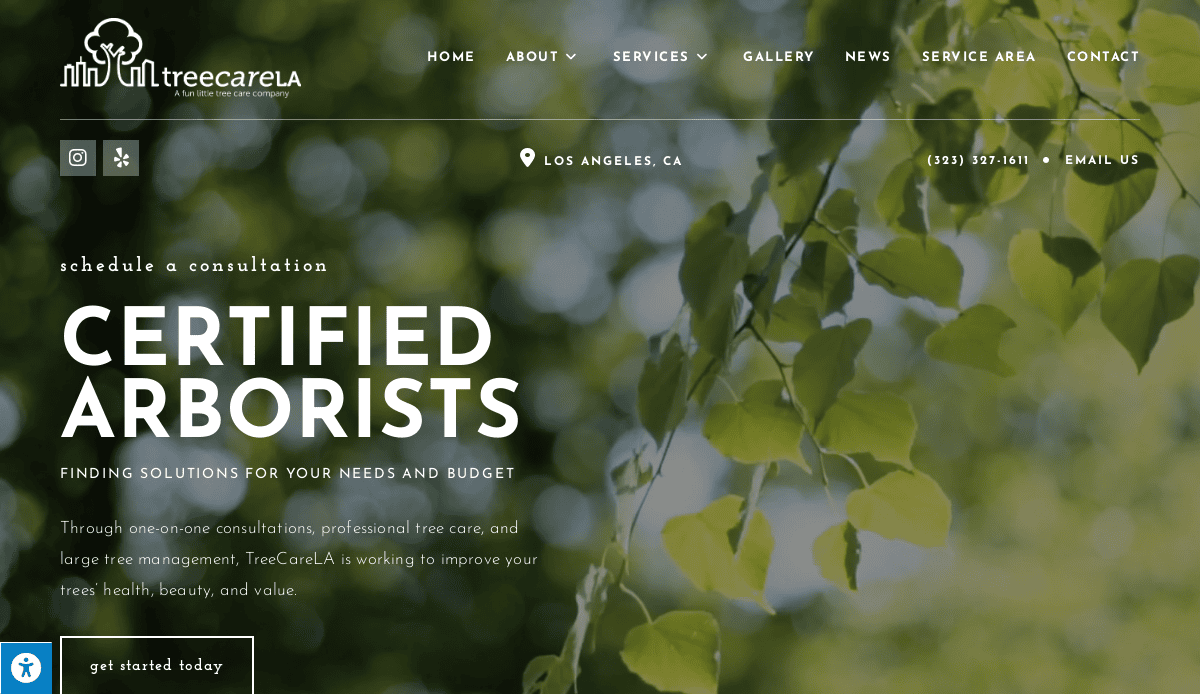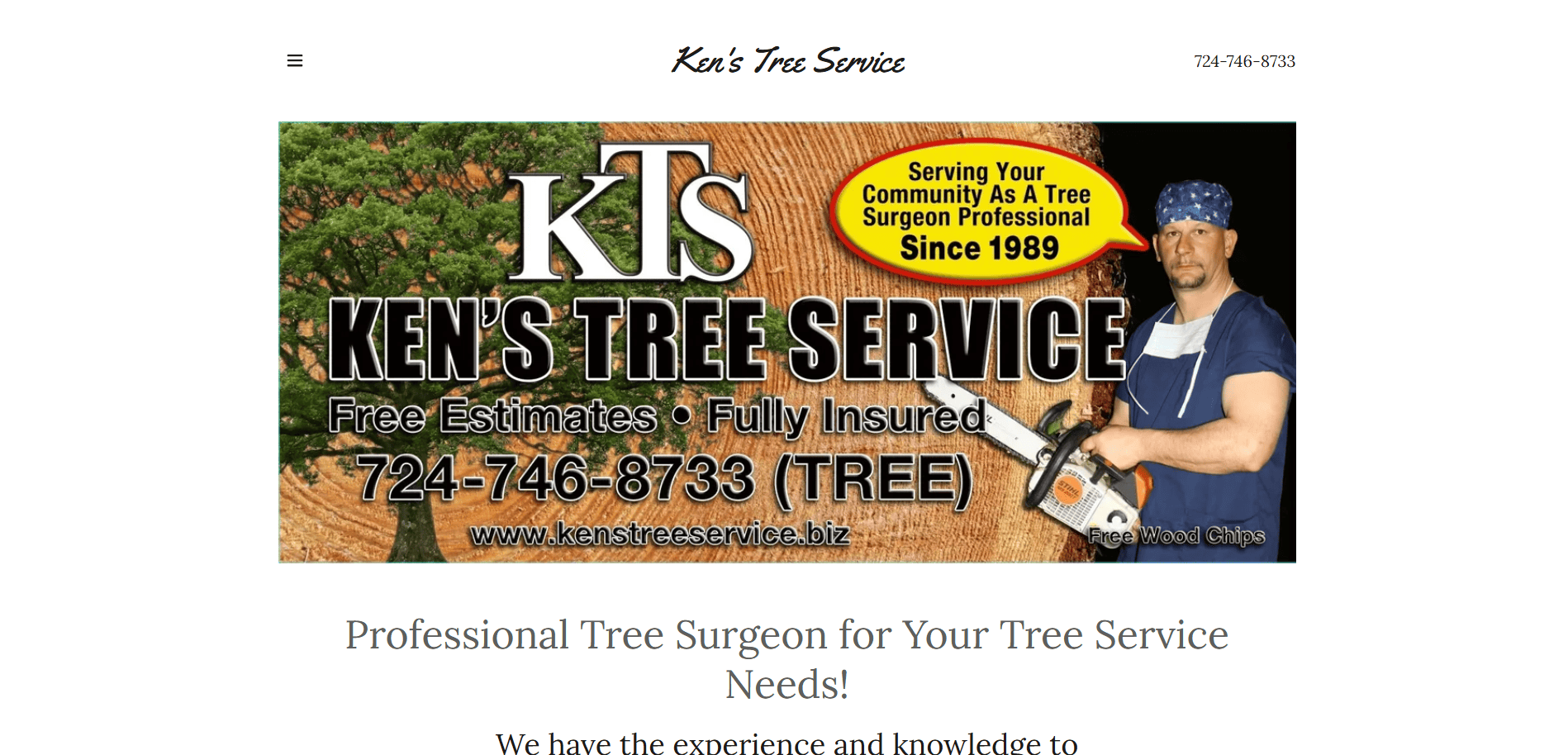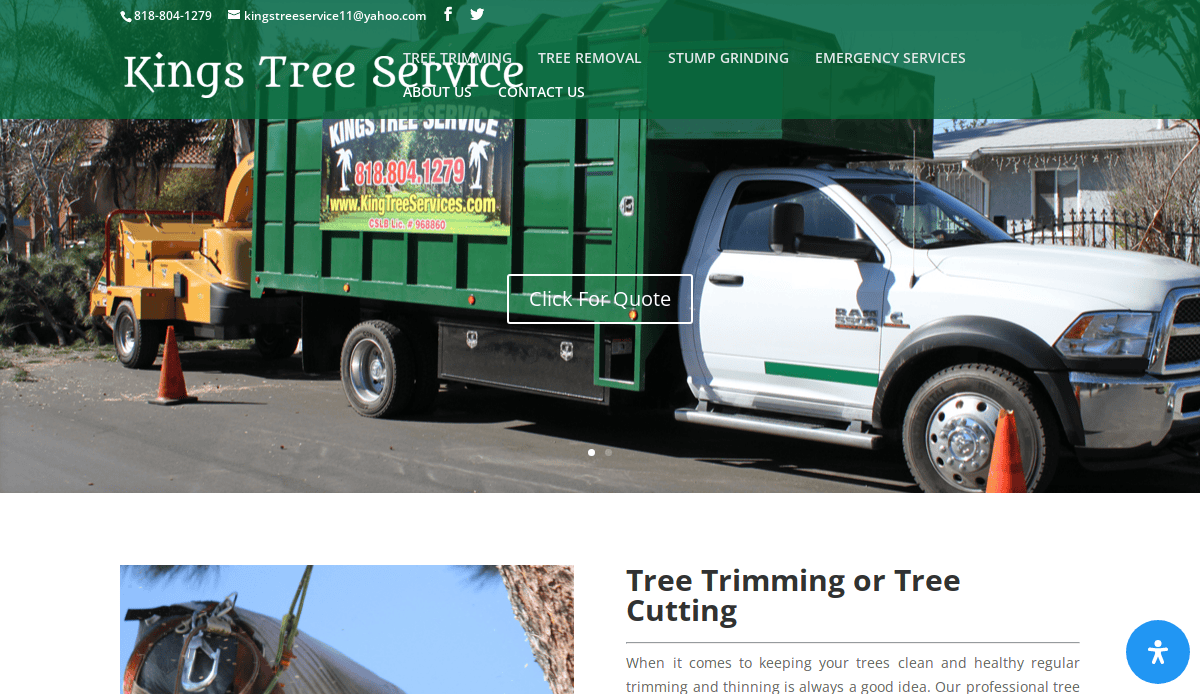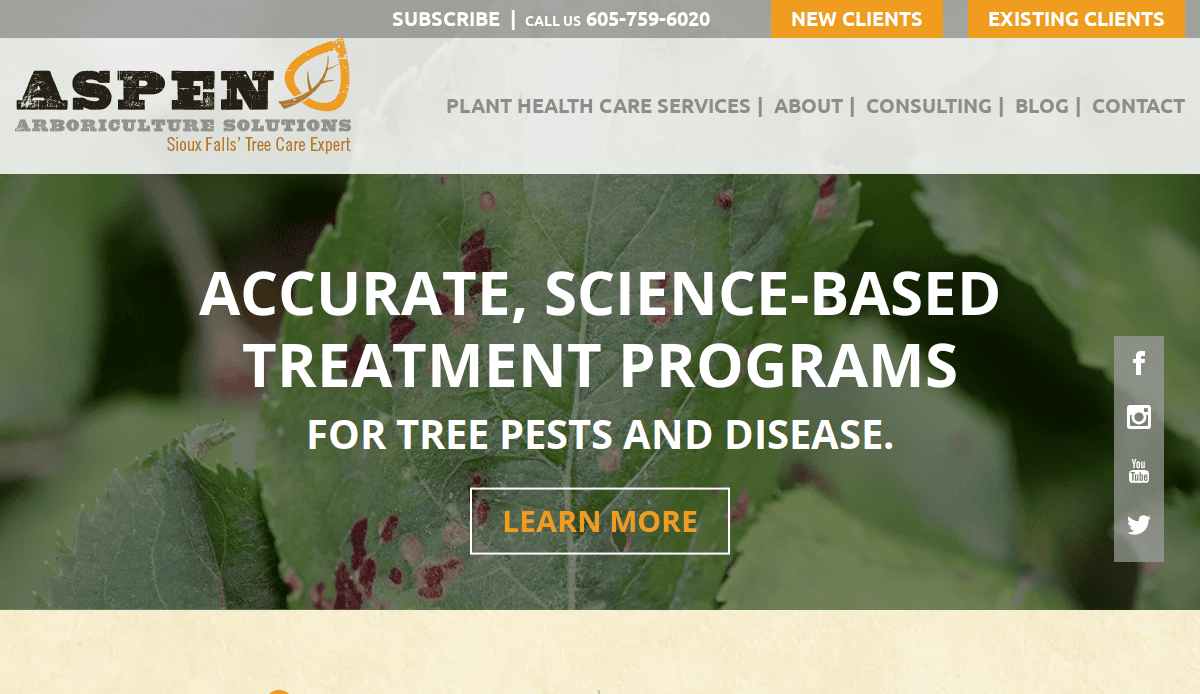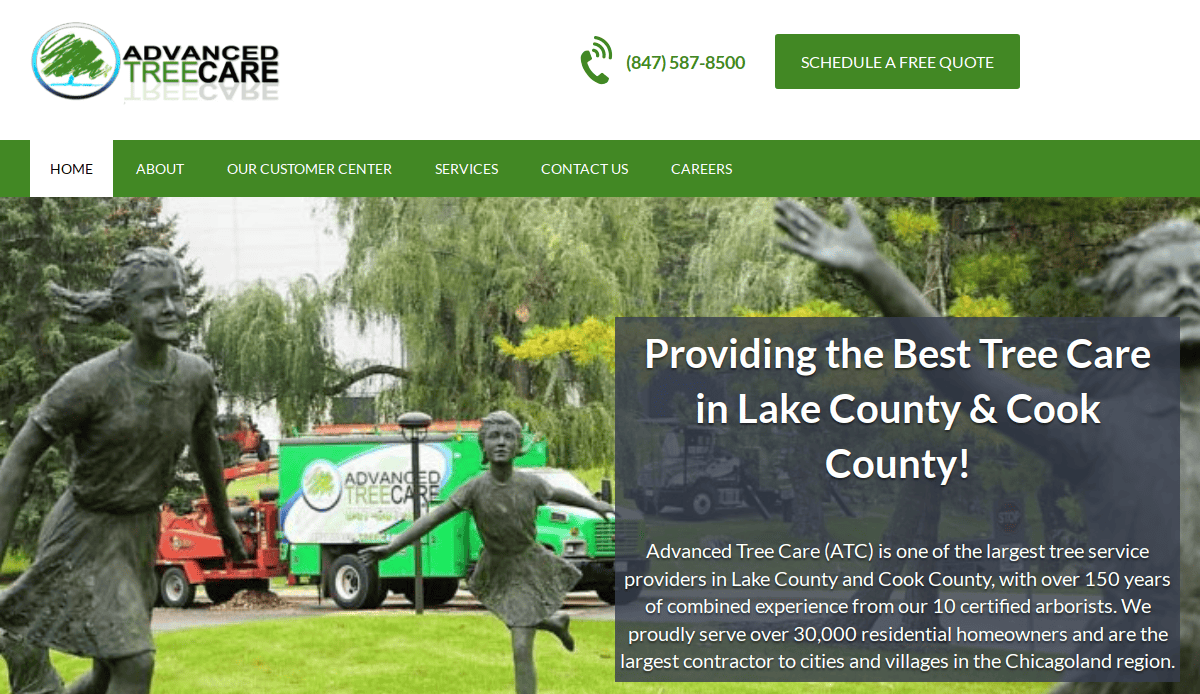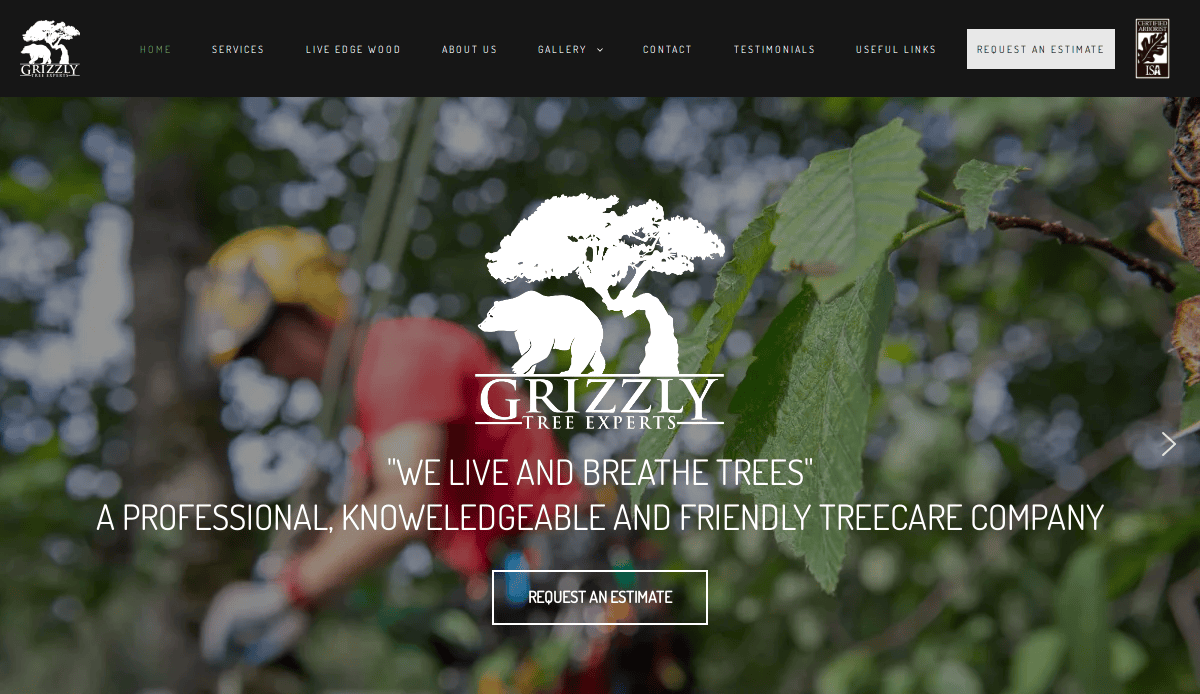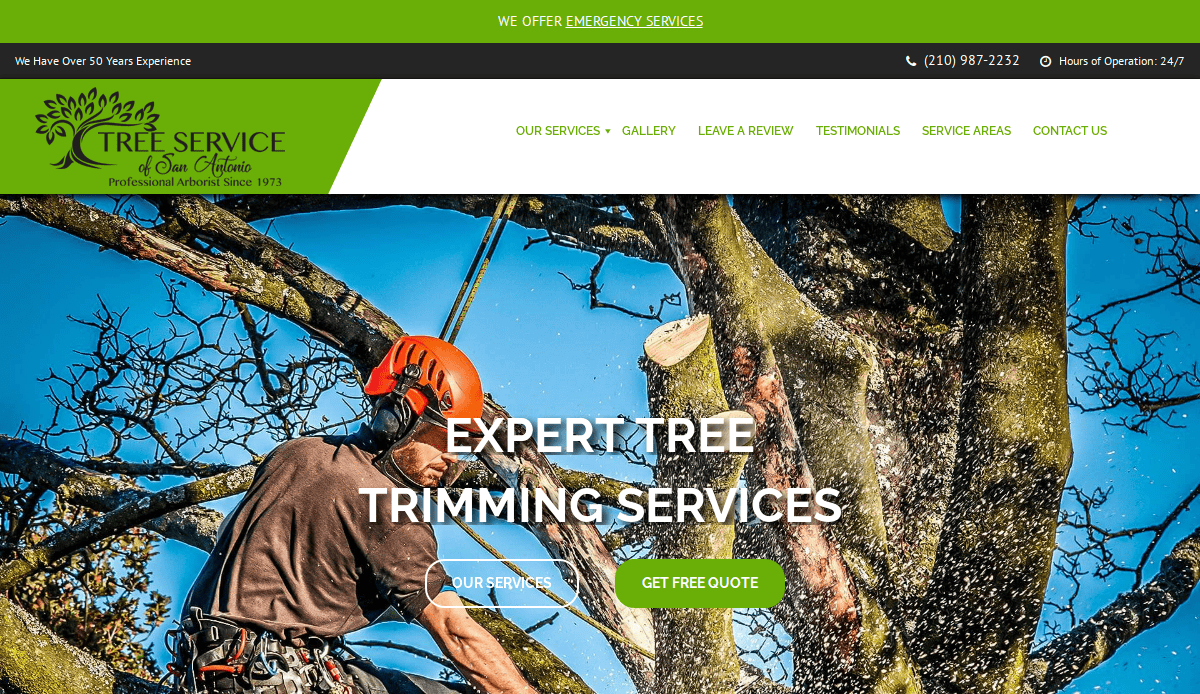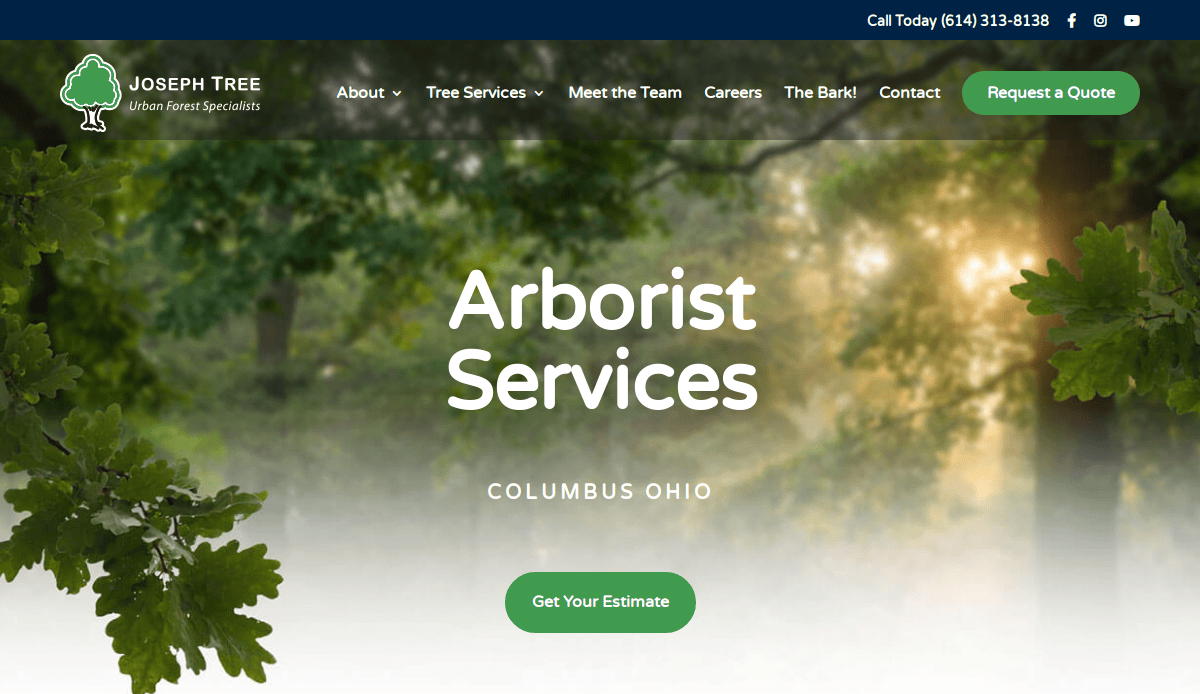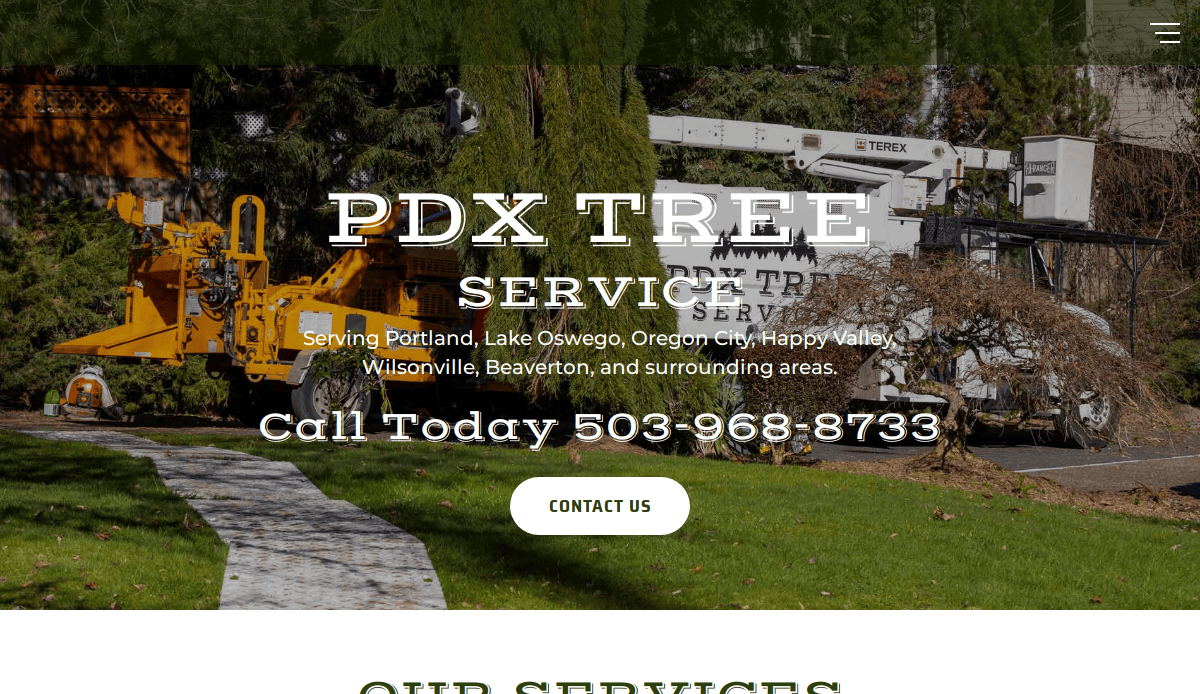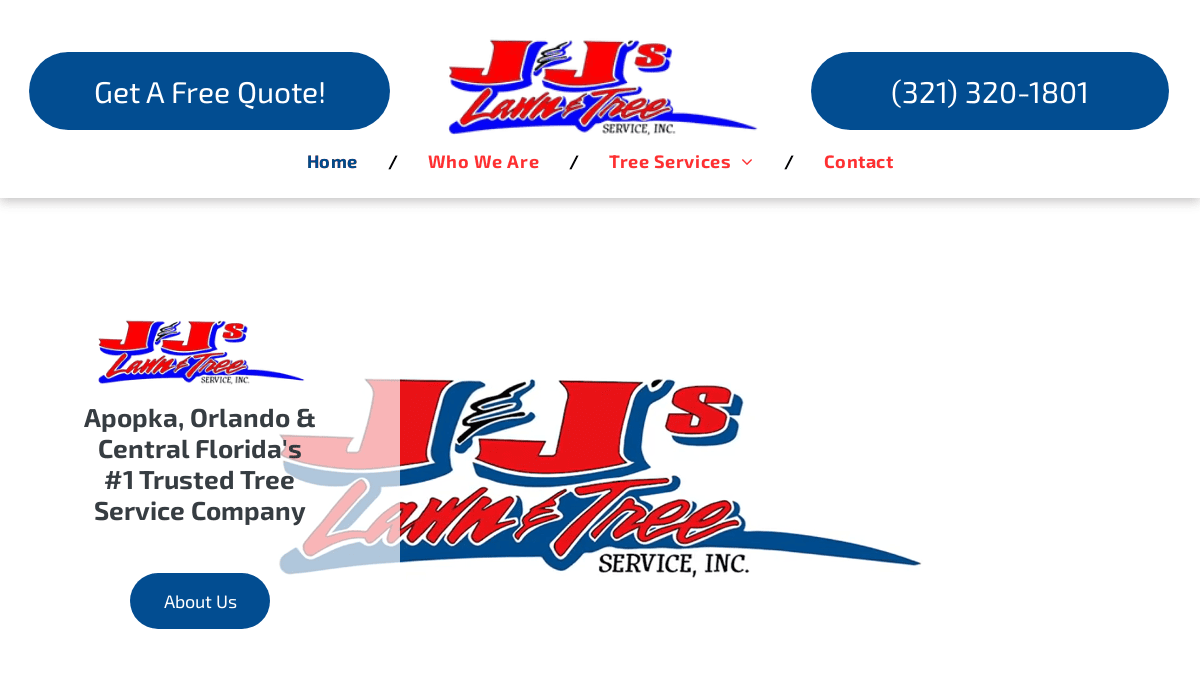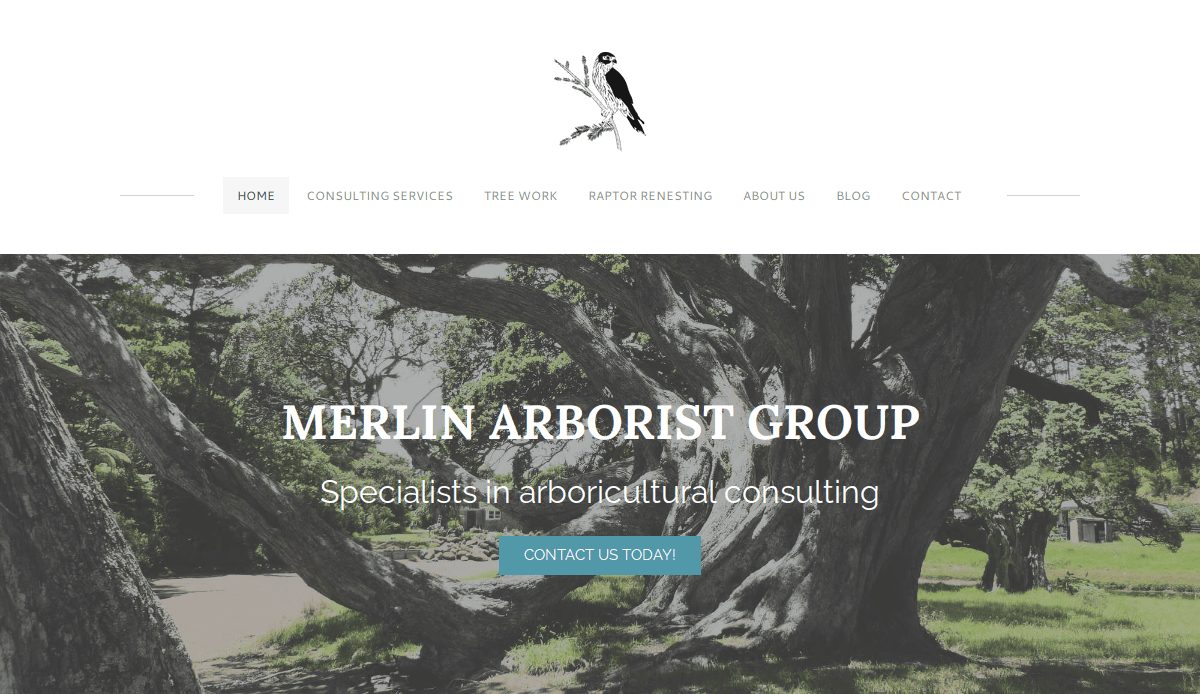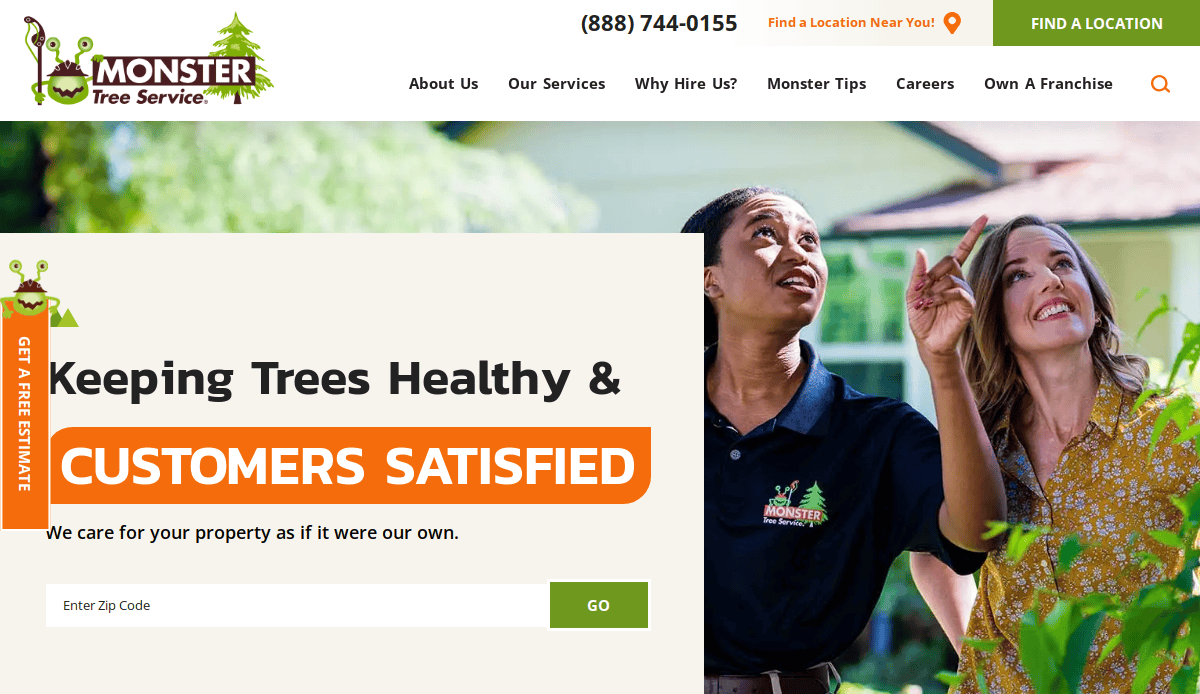Just looking for our Best Tree Service Website examples list?
Why a High-Performing Tree Service Website Is a Must-Have for Growth
For businesses offering specific services, first impressions no longer begin with a handshake—they start online. Whether you’re trimming trees in a quiet suburb or handling emergency tree removal after a storm, your potential customers are judging your business based on what they see on your website. And if your site isn’t professionally designed, easy to use, and optimized for search engines, you’re likely losing leads before they ever call.
An effective website is more than just a digital brochure. It’s a vital sales tool that communicates your services, builds trust, and drives conversions. With smart website design and strategic SEO, your site can appear in search engine results when homeowners look for specific services like “tree trimming near me” or “emergency tree removal.” That means more visibility, more calls, and more business.
From showcasing your servicing community and listing your tree care services to integrating SEO strategies and creating strong service pages, every part of your site matters. Great site design improves user experience, encourages visitors to explore more of your offerings, and helps Google understand and rank your site. It also makes it easier for your tree service business to stand out among competitors, many of whom are still relying on outdated or generic templates that fail to convert.
This guide is built specifically for tree service companies that want to level up their digital marketing. Whether you’re starting fresh or updating your current site, you’ll learn exactly how to build a high-performing, SEO-friendly tree service website that works as hard as you do.
Website Planning and Purpose: Setting the Foundation
Before diving into layout ideas or choosing a color scheme, every professional website must start with a clear plan. Without a strategic roadmap, it’s easy to create a website that looks decent but fails to attract visitors or convert them into customers. This makes website planning and development the most important step in building a high-performing digital presence.
Understand the Primary Goals
Every business has a slightly different focus—some specialize in residential tree trimming, others handle large-scale commercial tree removal. But across the board, the purpose of a tree service website typically falls into three buckets:
- Lead Generation: The primary goal is to convert visitors into leads by prompting phone calls, form submissions, or quote requests.
- Local Visibility: A well-optimized website ensures your business appears in local search results when customers in your area are looking for help.
- Trust & Credibility: A professional site reassures potential customers that you’re licensed, insured, and experienced.
By identifying these priorities early, you can make strategic decisions on layout, features, and content that support those goals.
Identify Your Target Audience
Planning a site also requires a strong understanding of who you’re trying to reach. Are your clients residential homeowners looking for routine tree maintenance? Or are they commercial property managers needing large-scale land clearing? Tailoring the design and copy to the expectations of your ideal client will significantly increase engagement and conversion rates.
Determine Core Website Features
Key features to include on your website should support your business goals and improve user experience:
- Clear Contact Options: Click-to-call buttons, quote forms, and visible contact info.
- Pages of Services: Individual pages for services like tree trimming, tree removal, stump grinding, and emergency tree work.
- Geo-Targeted Content: Pages optimized for each city or suburb within your target area.
- Photo Galleries: Before-and-after visuals that demonstrate quality work.
- Review & Testimonial Integration: Trust-building elements that validate your business’s reputation.
Plan for SEO From the Start
Search engine optimization shouldn’t be an afterthought. During the planning phase, it’s important to map out the keywords you want to rank for, like “tree removal in [city]” or “emergency tree service.” Create a sitemap that aligns each keyword with a dedicated page and make sure your content will reflect local areas for service, specific services, and frequently searched terms.
Build with Scalability in Mind
Your tree care business may grow, adding services, expanding territories, or hiring new crews. A properly planned website is built with this growth in mind. Ensure your web platform (like WordPress) is scalable and flexible enough to evolve without requiring a complete overhaul.
In short, the planning phase sets the tone for everything that follows. It ensures your website is not just a pretty face, but a hard-working tool that aligns with your business goals, speaks to your audience, and positions you ahead of competitors in your local market.
Design Principles for an Effective Website
A visually polished website is only as strong as the principles behind its design. Design must do more than just look professional—it needs to function as a lead-generation tool that builds trust, communicates clearly, and converts visitors into clients. The following design principles are essential to achieving that.
Simplicity and Clarity
Potential customers are often in a hurry, especially if they’re dealing with emergency removal of tree debris. Your site should be clean, intuitive, and easy to scan. Avoid clutter, unnecessary animations, or overwhelming color palettes. Keep menus simple, organize content with clear headings, and ensure that key information like services, areas for service, and contact options is accessible within one or two clicks.
Strong Visual Hierarchy
Use size, color, and placement to guide visitors’ attention. Headlines should be bold and informative. Call-to-action buttons—like “Request a Quote” or “Call Now”—must be highly visible and consistently styled throughout the site. Use whitespace strategically to separate content, so that users can absorb information without feeling overwhelmed.
Responsive and Mobile-First Design
More than half of local service searches come from mobile devices. If your site doesn’t load quickly or display properly on phones and tablets, you risk losing potential customers. A mobile-first design ensures that your site is fast, readable, and fully functional across all screen sizes, from smartphones to desktops.
Consistent Branding
Your logo, color scheme, and font choices should reflect your company’s identity and remain consistent across every page. This builds trust and reinforces your professionalism. For example, using greens and earth tones can subtly align with the nature-focused services you offer, while also creating a calming visual experience.
Accessible Navigation
Visitors should be able to find what they’re looking for in under three clicks. Use a simple top navigation bar that links to your main pages, area of services, an about section, gallery, testimonials, and contact page. Include a sticky header or back-to-top button for easy navigation, especially on longer pages.
Visual Trust Signals
Professional design isn’t just about aesthetics—it’s about reassurance. Incorporate trust-building elements like badges for certifications, insurance, or safety compliance, as well as client testimonials, “Years in Business” banners, or recognizable client logos. These visual cues subtly signal reliability and experience.
High-Quality Imagery and Media
Yours is a visual business, and your website should reflect that. Use professional, high-resolution images that showcase your team at work, before-and-after shots of trimmed trees or removal, and clean equipment. Avoid stock photos when possible. Authentic visuals enhance credibility and make your website stand out.
Fast Loading Speed
Speed matters for both UX and optimization. Compress images, use a reliable hosting platform, and minimize scripts that slow down your site. A slow-loading page can drive visitors away, especially those accessing your site from a mobile device in a time-sensitive situation.
By following these core design principles, your website will look professional, function effectively, and support your overall business goals, turning website visitors into loyal customers.
Content and Navigation: Structuring for User Experience and SEO
For a site to convert visitors into paying clients, content must be clear, relevant, and easy to find. Navigation should guide users logically through your services, qualifications, and contact options, removing friction from the decision-making process. A strong content and navigation structure enhances user experience and signals relevance to search engines, improving your site’s rankings and visibility.
Homepage: Clear and Compelling Introduction
Your homepage is often the first impression. It should immediately communicate what you do, who you serve, and why visitors should trust you. Include a concise hero message with a prominent call-to-action (e.g., “Request a Free Estimate”). Feature a brief overview of your services, area coverage, testimonials, and trust signals such as licensing, insurance, and years in business.
Services Section: One Page Per Service
Each specific service—trimming, tree removal, stump grinding, emergency services—should have its own dedicated page. This improves UX by allowing visitors to quickly find exactly what they need, and helps you rank for targeted keywords related to each service.
Each page highlighting a service should include:
- A clear description of the service
- Benefits and common use cases
- Service process overview
- Related FAQs
- CTA to contact or request a quote
Service Area Pages: Local SEO Power
Create geo-specific landing pages for each town or city in your immediate areas of service. These pages should include:
- An overview of the services available in that location
- Mention of nearby neighborhoods or landmarks
- Testimonials or case studies from local clients
- A map or driving distance note to reinforce local presence
This structure boosts your visibility for searches like “tree service in Naperville” or “tree trimming near me,” helping you dominate local search results.
About Page: Build Trust with Your Story
The About page should explain your business history, team experience, safety practices, and customer-first philosophy. This is your opportunity to establish credibility and differentiate your company from competitors. Including authentic team photos and client quotes can humanize your brand and build trust.
Testimonials and Case Studies: Social Proof
Dedicate a section or page to client testimonials and before-and-after galleries. Real-world results and customer satisfaction build immediate trust. Include a range of projects, from routine maintenance to complex emergency jobs, to showcase your versatility and reliability.
Contact Page: Clear and Easy to Use
The contact page should feature:
- A phone number with click-to-call functionality
- A contact form with minimal required fields
- Business hours
- Office location (if applicable)
- Links to social profiles and Google Business Profile
Make it easy for users to take the next step—whether that’s calling you, requesting a quote, or asking a question.
Navigation Menu: Intuitive and Minimal
The top menu should include clear, concise labels:
- Home
- Services (dropdown menu with individual services)
- Areas of service
- About
- Testimonials
- Contact
Avoid burying important content in vague categories or using industry jargon. Visitors should be able to find what they need in a maximum of three clicks.
Footer Navigation: Reinforce Essentials
Use the footer to repeat key links, display contact information, and add legal disclaimers. You can also include links to a privacy policy, terms of service, and licensing details.
A well-structured content and navigation system is critical for both SEO and UX. It helps search engines index your content correctly and ensures your visitors can quickly find—and act on—the information they need. For a tree service business, that means more calls, more quotes, and more booked jobs.
Visual Elements: Enhancing User Experience and Brand Identity
In the service industry, trust is built visually as much as it is through words. Homeowners and property managers want to see proof of your work before handing over their trees—and potentially thousands of dollars. Visual elements are not just design flourishes; they’re strategic tools that can dramatically improve user experience, support conversions, and reinforce your brand’s credibility.
Use Real, High-Quality Photos
Authenticity matters. Stock photos may fill space, but they rarely build trust. Use original, high-resolution images that show your crew on the job, before-and-after shots of completed work, equipment in action, and team portraits. These visuals provide evidence of professionalism and help potential customers visualize what they can expect.
Create a dedicated gallery or integrate photos directly into service pages to illustrate removal, trimming, stump grinding, and emergency work. Including location tags or brief project descriptions can also support your local SEO efforts.
Feature Before-and-After Comparisons
Before-and-after photo sliders or side-by-side images are particularly powerful for tree care companies. They visually communicate the impact of your services and demonstrate attention to detail. These images can be featured on service-specific pages or within a testimonials section for added credibility.
Embed Video for Higher Engagement
Videos keep users on your site longer and help convey your brand’s personality and process. Consider adding:
- A 60-second “About Us” video featuring your team
- Drone footage of large-scale removal jobs
- Step-by-step breakdowns of your tree care process
- Customer testimonial videos
Video content improves user engagement and boosts your rankings in search engine results when properly optimized.
Use Consistent Branding Elements
Consistency in color, typography, and design layout reinforces your identity. For this industry, earthy tones (greens, browns, blues) paired with bold typography project reliability and professionalism. Your logo should be clean, scalable, and visible across all devices. These cohesive elements create a recognizable and memorable brand experience.
Incorporate Trust-Building Visuals
In addition to showcasing your work, visual elements like badges, certifications, and partner logos increase user confidence. Use iconography to highlight key selling points, such as “24/7 Emergency Services,” “Licensed and Insured,” or “Over 15 Years in Business.” These can be placed in sidebars, service highlights, or beneath call-to-action sections.
Optimize for Load Speed and Accessibility
Even the best visuals can hurt your website if they slow it down. Compress all images for the web, use appropriate file formats, and implement lazy loading to prioritize speed. Ensure all images include alt tags for accessibility and optimization, and that your color contrasts meet ADA compliance standards to ensure legibility for all users.
In short, visual elements are not decorative extras—they’re essential components that shape how users perceive and interact with your site. For tree service companies, strong visuals tell your story, show the quality of your work, and ultimately move visitors one step closer to hiring you.
Ongoing WordPress Maintenance
Launching a new WordPress website for your tree service business is only the beginning. To ensure that your website continues to perform well, rank in search engines, and remain secure, it requires consistent maintenance. Without it, you risk broken features, slow load times, security vulnerabilities, and a declining search presence—all of which can drive potential customers away.
Keep Plugins and Themes Updated
WordPress runs on a core system that includes themes and plugins, many of which are third-party tools. Regular updates are essential to ensure compatibility, fix bugs, and patch security risks. Outdated plugins are one of the most common entry points for hackers, and they can also break critical features on your site, such as quote forms or contact widgets.
Perform Regular Backups
Routine backups are vital to protect your website from accidental data loss, server crashes, or cyberattacks. A good maintenance plan includes automated daily or weekly backups stored securely off-site. That way, your site can be restored quickly if anything goes wrong, minimizing downtime and lost leads.
Monitor Website Performance
Page speed is a ranking factor for Google and a critical component of user experience. Routine performance monitoring helps you detect slow-loading pages, broken images, or scripts that may be hurting your site’s speed. For a tree care website, this can directly impact bounce rates and reduce how many users reach your contact form.
Run Security Scans
Security is especially important for service-based businesses that handle customer inquiries and contact data. Maintenance should include regular security scans to identify and block threats such as malware, brute-force login attempts, and unauthorized file changes. Implementing firewalls, strong password policies, and login protection adds additional layers of defense.
Check for Broken Links and Errors
As you update content or expand your services, it’s common for URLs to change. Broken links can harm your optimization efforts and frustrate users. Maintenance should include regular link audits and 404 error monitoring to keep the user journey smooth and search-engine-friendly.
Update Content Strategically
Search engines favor fresh, relevant content. Ongoing maintenance should involve reviewing and updating service pages, FAQs, and blog posts to reflect seasonal tree care tips, new services, or updated area coverage. This keeps your content competitive and ensures your site continues to serve as a relevant resource for your audience.
Maintain SEO Integrity
WordPress maintenance isn’t just about technical health—it also supports SEO. Tasks like refreshing meta descriptions, updating schema markup, and ensuring mobile responsiveness are part of keeping your site optimized for search engines. Ignoring these details over time can result in a drop in rankings and reduced visibility in local search results.
Ongoing maintenance ensures your website stays fast, secure, and aligned with your business goals. For companies relying on online leads, this is not optional—it’s part of protecting your investment and keeping your business visible and credible online.
20 Tree Service Example Websites to Inspire
A well-designed website is essential for tree service businesses aiming to attract and convert clients. Below are 20 exemplary service industry websites, including five designed by our experts, each showcasing effective design elements that enhance UX and drive engagement.
1. Fernandez Tree Service – Chicago, IL
Key Takeaways:
- Minimalist design with a harmonious color palette.
- User-centric navigation enhances the overall UX.
- Strategically placed calls-to-action (CTAs) guiding user engagement.
2. TreeCareLA – Los Angeles, CA
Key Takeaways:
- Modern design with excellent color contrasts and high-quality images.
- Streamlined layout facilitating effortless navigation.
- Authentic photographs add credibility.
3. Ken’s Tree Service – Philadelphia, PA
Key Takeaways:
- Clean, user-friendly homepage with essential information readily available.
- Clear service offerings and contact information.
- Efficient layout reduces the need for excessive scrolling.
4. King Tree Services – Atlanta, GA
Key Takeaways:
- Simple design with a clear CTA for quote requests.
- Easy access to the client portal for existing customers.
- Quick site setup facilitates lead capture.
5. Aspen Arboriculture Solutions – Sioux Falls, SD
Key Takeaways:
- Consistent branding with complementary color schemes and fonts.
- Professional logo placement enhances brand recognition.
- Clear service descriptions aiding user understanding.
6. Advanced Tree Care – Chicago, IL
Key Takeaways:
- Clean layout with a focus on UX.
- Strategic use of color to highlight CTAs.
- Informative content detailing services offered.
7. Grizzly Tree Experts – San Francisco, CA
Key Takeaways:
- Bold typography and high-quality visuals.
- Concise content emphasizing key services.
- Responsive design ensures accessibility across devices.
8. Tree Service of San Antonio – San Antonio, TX
Key Takeaways:
- Professional color palette reflecting industry standards.
- Well-organized navigation bar for easy access to information.
- Inclusion of customer testimonials builds trust.
9. Joseph Tree – Columbus, OH
Key Takeaways:
- Stunning imagery showcasing completed projects.
- Balanced white space enhances readability.
- Informative blog providing value to visitors.
10. One Day Tree Service – New York, NY
Key Takeaways:
- Organized content with a focus on user needs.
- Prominent display of contact information.
- Optimized content aimed at conversions.
11. Green Leaf Zone Tree Service & Brush Clearing – Los Angeles, CA
Key Takeaways:
- Attractive color scheme with high-quality visuals.
- Informative content detailing services and processes.
- Integration of maps showing all accessible areas.
12. Titan Tree Care – Phoenix, AZ
Key Takeaways:
- Concise paragraphs conveying essential information.
- Informative blog enhancing optimization and user engagement.
- User-friendly features like text communication options.
13. PDX Tree Service – Portland, OR
Key Takeaways:
- Creative logo design enhances brand identity.
- Captivating fonts improve readability.
- Domain name matches company name for easy recall.
14. J&J’s Lawn and Tree Service – Orlando, FL
Key Takeaways:
- User-friendly design with clear navigation.
- Comprehensive information about services and company background.
- Integration of social media and accreditations.
15. Friendly Tree Service – Orange, NJ
Key Takeaways:
- Informative blog providing industry insights.
- Easy-to-use contact forms facilitate inquiries.
- Clear presentation of services offered.
16. Ahlum & Arbor Tree Preservation – Columbus, OH
Key Takeaways:
- Clear articulation of competitive advantages.
- Detailed company bio accessible from the homepage.
- Professional presentation of services and credentials.
17. 770 Arborist – Atlanta, GA
Key Takeaways:
- Prominent display of contact information and CTAs.
- Engaging homepage with a dynamic background.
- Clear explanation of services offered.
18. Merlin Arborist Group – Austin, TX
Key Takeaways:
- Comprehensive list of services with detailed descriptions.
- Gallery showcasing completed projects and the team.
- Integration with social media platforms.
19. Vineland Tree Care – Minneapolis, MN
Key Takeaways:
- Dedicated testimonials section builds trust.
- Professional design with consistent branding.
- Clear navigation facilitates UX.
20. Monster Tree Service – Fort Worth, TX
Key Takeaways:
- Strong branding with a professional logo and design.
- Comprehensive information about services and company history.
- User-friendly layout enhances navigation.
These websites exemplify effective site design for the tree service industry, incorporating elements such as responsive layouts, clear CTAs, authentic imagery, and informative content. By analyzing these examples, tree service businesses can gain insights into creating or enhancing their own websites to better attract and serve clients.
Ready to Elevate Your Tree Service Website?
A well-designed website is more than a digital business card—it’s a strategic tool to grow your tree service business. Whether you’re focused on expanding your tree pruning and trimming services, improving your visibility in search engine results pages, or generating more leads for your tree service, your website must be built to perform. From responsive design and high-quality visuals to content that speaks directly to your audience, every detail plays a role in making your website stand out.
If your current site doesn’t reflect your professionalism or isn’t ranking where it should be, it’s time to make your site work harder for your business. Let us help you design a modern, high-converting tree service website that’s tailored to your goals and optimized for growth.
Ready to build a reliable website that highlights your expertise and turns visitors into clients? Request a Free Website Proposal and get started today.
FAQs About Professional Tree Service Website Design
What makes a tree service website successful?
A successful website in tree service is one that clearly communicates your services, builds trust with visitors, and drives leads. Key website elements include a professional design, mobile responsiveness, local SEO, and conversion-focused content. Features such as before-and-after project photos, service-specific pages, and testimonials all contribute to a site that converts visitors into tree service clients.
How can I improve my website’s rank on Google?
To improve your website’s rank, implement optimization strategies such as optimizing on-page content with local keywords (e.g., “emergency tree removal in [city]”), creating location-based area pages for services, and ensuring all technical SEO basics are covered. Publishing helpful blog posts related to the tree services you offer can also support topical authority.
What pages should be included on a tree service business’s website?
At a minimum, your site should have these core pages:
- Home
- About
- Services (with individual pages for each offering, like trimming or pruning)
- Areas for service
- Gallery or Project Examples
- Contact
Each page should focus on specific keywords related to tree services and include clear calls to action.
What are the best service site design examples?
The best website design examples include sites that combine responsive site design, authentic visuals, and strong calls to action. Many websites that stand out use real project photos, show service coverage areas, and highlight safety credentials. These websites build trust and support stronger website conversion rates. Our upcoming section showcases the 25 best tree service website design examples.
How important is responsive design for a service website?
Responsive design is critical. Most people searching for tree services do so on mobile devices. A responsive site design ensures your site looks and functions properly on smartphones, tablets, and desktops, reducing bounce rates and increasing engagement from potential tree service clients.
How often should I update my website content?
Update your content at least quarterly to ensure accuracy and search engine performance. Refresh service descriptions, add project photos, and publish blogs related to tree health, seasonal tree care, or local tree service topics. Keeping your content up to date helps optimize your website and signals to Google that your site is active and relevant.
Can a simple website design still be effective?
Yes, a simple website design can be highly effective if it focuses on the right website elements. Clarity, ease of navigation, fast load times, and strong calls to action often outperform overly complex layouts. A clean, modern site with well-organized content can convert better than cluttered or over-designed alternatives.
What should I look for when hiring someone for tree service site design?
Look for an agency experienced in website design for tree service businesses. They should understand the tree care industry and have a portfolio of designed websites. Ask about their approach to website conversion rates, responsive design, and keyword strategies for tree services.
Do I need a blog on my website?
Yes, a blog helps improve your search engine visibility and builds authority around your services. Regularly posting articles related to tree health, storm preparation, or the benefits of hiring tree experts gives you opportunities to rank for long-tail keywords and connect with local readers searching for tree services.
Is it better to start with a new website or fix my current one?
It depends on the state of your existing site. If your current website lacks responsive design, has poor SEO foundations, or doesn’t support your tree service marketing goals, starting fresh may be the better long-term move. A new website aligned with your branding, service offerings, and user experience needs can deliver faster results and better ROI.
For help planning or launching your next site, visit our WordPress Web Design page to see how we support tree companies like yours.


